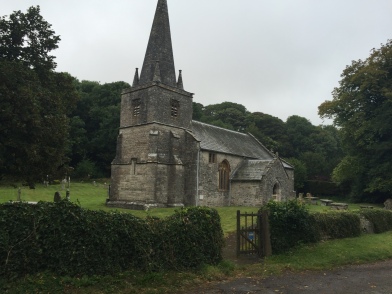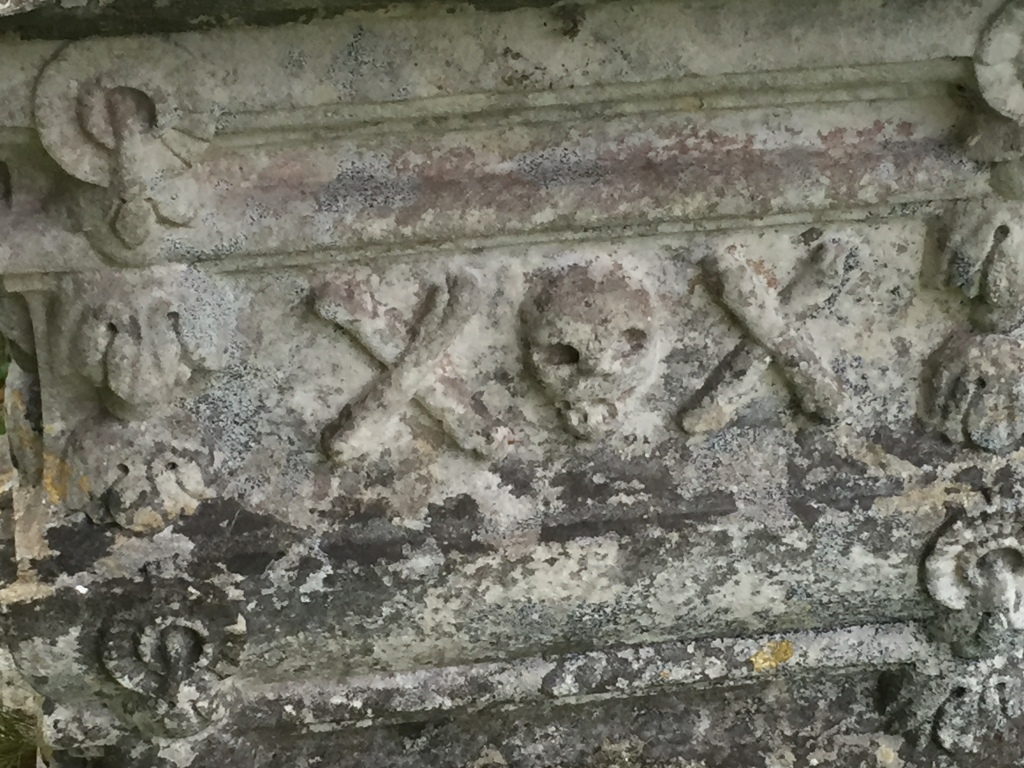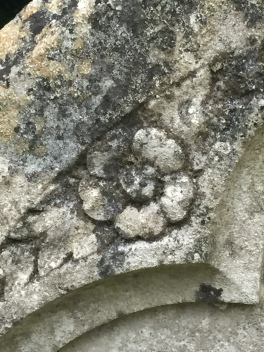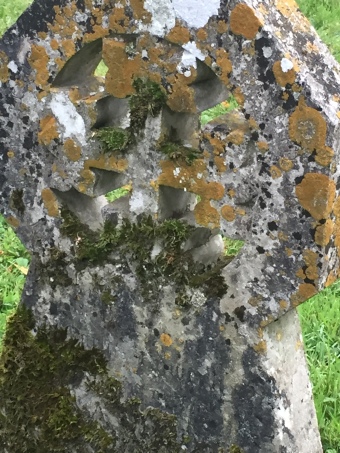I find tombstones fascinating. I’m not really sure why. It may be because they are the last visual marker of a person’s life, and I’m curious as to what they reveal. It’s the old tombstones that I’m drawn to the most, the ones covered in lichen and eaten by wind and rain. Whatever was engraved upon them is usually very nearly erased, and I love the mystery of it.
I fully realized this interest after looking back on the pictures I took of my last trip to England. A large proportion of pictures centred around churches, cathedrals, and graveyards.
And in honour of All Souls’ Day, I thought I share with you my favourites, and they happen to be in Dorset.

In Winterbourne Steepleton, Dorset, you’ll find St. Michael’s church. A church has stood here since the 11th century, and its cornerstones are Pre-Conquest. Over the centuries, that little church has been rebuilt and expanded. Seven different periods are represented here.
I came upon St. Michael’s and explored its graveyard on a grey misty morning, which is perfect if you want to get the full experience of a Dorset graveyard.
This crypt captured my attention because of the skull and crossbones. I wondered who was buried there and especially why that symbol was included. The crypt was quite substantial (there was only one other like it), and it must have been made for someone of wealth. I have to wonder how he must have achieved this wealth. Smuggling? Piracy?

Below, is a charming Tudor rose carving on a headstone. I may have my roses mixed up because the area occupied by the church was once owned by Edmund Mortimer (1285 AD) and eventually passed through to King Edward IV of the House of York. There are York roses included in the stained glass inside, but somehow this one on the gravestone makes me think Elizabethan. It’s not as worn out as one might expect if it stood there an extra couple of centuries.

This old gravestone appeared to be one of the oldest in the graveyard, judging by the condition of the stone. I loved the Celtic cross design in the centre.

Leaving Winterbourne Steepleton, we arrive at St. Nicholas in Abbotsbury. This church was built in the 14th century. It overlooks the site of Abbotsbury medieval abbey, of which very little remains except an old wall and a tithe barn.
In the churchyard, there are more examples of old Celtic crosses.
What captured my interest was this design, which appeared on a number of tombstones in the yard. It’s a Christogram depicting the IHS initials that is short for Christ in Greek: IHΣΟΥΣ.
There were so many of them here at St. Nicholas that I wondered why they were so popular here. I didn’t see this pattern in any of the other churchyards I wandered through.
St. Nicholas had more modern monuments, including a lovely statue of an angel. I suspect that a young maid was probably buried there.
I hope you’ve enjoyed my traipse through a couple of Dorset churchyards. I visited a number of churches and cathedrals throughout my trip and admired the plaques and monuments inside. Although they were all beautiful works of art, it’s really these grave markers, exposed to the elements yet still standing, which made the biggest impression on me. Long may they stand.











Reading tombstones and memorials is a wonderful way to spend time. Some of my favorites are in Exeter cathedral where humorous personal details were included. As to the skull-and-crossbones, I recall they represented mortality long before being adopted by the pirates.
LikeLiked by 1 person
That’s interesting…yet odd to put it on a crypt when the person doesn’t need additional reminders of their mortality. 🙂 But I do believe you’re right. If you can remember some of the Exeter details, please share!
LikeLike
My understanding is that symbols like the skull and crossbones were put on crypts to remind the living that they should live a good life, because we too will be here soon. I’ll see what I can find on Exeter.
LikeLiked by 1 person
Thanks! Will stay tuned.
LikeLike